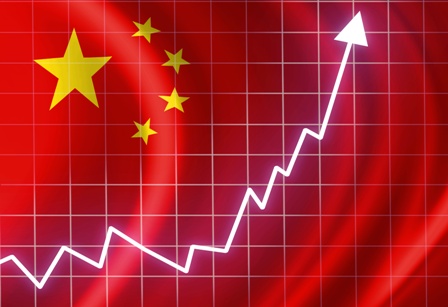
Second, positive trends are gaining traction. Chinese economy is looking up on the whole, with indicators improving across the board: GDP growth in 2016 outperformed expectations, CPI made marked gains, newly added jobs overshot forecasts, the market interest rate advanced, monetary policy was tightened moderately, PMI stayed in the expansionary territory, interest rates steadied and firmed, and the stock market and real estate market started to recover in the second quarter. Some other indicators may take time to be made manifest, such as the profit gains in above designated scale enterprises, which increased from -2.3% in 2015 to 8.5% in 2016, and earnings of the banking sector, which have accelerated moderately from 2.5% in 2015 to 3.5%. In a nutshell, the Chinese economy has reached a turning point, and the positive changes will take hold and disseminate throughout the economic fabric.
Third, while the financial sector stabilizes, asset price bubbles still loom large. The financial system mirrors the health of the real economy, and the banking sector, albeit usually with lagging effect; it is a barometer to tell which way the economy is heading as well. China’s banking and securities sectors are in better shape. For the securities sector, it has tided over a turbulent episode, and both the A-share and H-share markets have performed better during the course of the previous four quarters. For the banking sector, people are more conscious of its declining profitability, which has nosedived to 2.5% in 2015 from 36% in 2012, prompting concerns about asset quality and underlying risks in the banking sector. China’s banking sector grew by 3.5% in profitability terms in 2016, with ROA and ROE having grown at 0.98% and 13.3% respectively. Profitability indicators improved, NPL and other bad loans ratios declined and capital adequacy and provision were at stable levels. If the positive momentum persists, it could well be said that the worst of the banking sector is behind us. Local government debts were being cleaned up, while the corporate debt sector experienced some back and forth, but on the whole the financial sector is turning for the better.
That said, pessimists do have some reason behind their arguments. Before 2012, the gauge for China’s economy was the phenomenal GDP10% +CPI13% combination. Some people on the one hand cling on to the past breakneck growth, while also worrying about the uncharted future, a new combination that leads to pessimistic views. The rationale for their pessimism could be explained as follows:
First, it is still not a foregone conclusion as to whether China is in the midst of short-term volatility, or a turning point of a long cycle. A common view is that China has already entered a long downward cycle, and what we are seeing now is but a short-term recovery.
Second, the most pressing challenges for China’s economy, namely overcapacity, debts and a real estate bubble, remain unresolved. Even if China has reached a turning point, it is one fraught with massive obstacles that would make sustainable growth hang in the balance.
Third, new drivers of growth are yet to be clearly identified. This is probably the most convincing argument by the pessimist camp, and most difficult one for the turning point proponents to refute.
All in all, we have to bear the following in mind. First, there is no point in feeding the pessimistic view. Second, China is well positioned to maintain mid- to high-level growth, say between 6% and 7%. Third, the search for new growth drivers is an ongoing process, and the central government will steer the Chinese economy through the new cycle based on its analysis and strategic planning in the context of the “new normal”. Fourth, whether China can navigate the new cycle successfully will determine its ability to catch up with the US economically, and its ability to bring the Chinese Dream into fruition by 2020. We should be more result-focused and open-minded about China’s economic pursuit, and tilt more to the positive side while weighing its economic future.



